Craftsmen from Tibetan-inhabited areas in Sichuan

The exhibition of Tibetan craftsmanship, themed around "Ziwu craftsmen of the Maisu snow area", will be on display from October 1 – 30 at Baimamaiduo International Art Center in Beijing’s 798 Art District. This is the first time that the story of 22 craftsmen living in the mountains at 3500 meters above sea level and separated by thousands of miles is shown to the world. The stories of 22 craftsmen and 11 different kinds of handicraft heritage from Maisu in Dege in Sichuan, including copper casting, pottery, wood carving, sewing, blacksmithing, gold and silver processing, Thangka and others, make their first appearance in Beijing.

The Maisu area is known as “China’s Bhutan” and is located in the remote mountainous regions of Dege County in Sichuan’s Ganzi Tibetan Autonomous Prefecture. Historically, together with Lhasa and Xiahe in Gnasu, they are known as the “three major ancient Tibetan cultural centers” and have played a pivotal role in the development of Tibetan culture. This exhibition is organized by local Maisu enterprises and contains rich images and a simple story. It combines reproduced manual scenes with on-site interaction with craftsmen to reflect the revival and heritage of the last 30 years of Maisu handicraft civilization. At the same time it will also display the support model provided by local social enterprises and the process of bringing traditional handicraft to market, forming a brand and healthy development.

Karma Chodron is a 28-year-old gold and silver processing craftsman.

Due to his three brothers being monks, when he was younger she wanted to be a nun, but later on developed a strong interest in Tibetan traditional handicraft.

Karma Chodron’s father, Tashi Dorje, is the most famous gold and silver processing and Buddha statue casting craftsman in the area, and is the only craftsman to have mastered this skill.
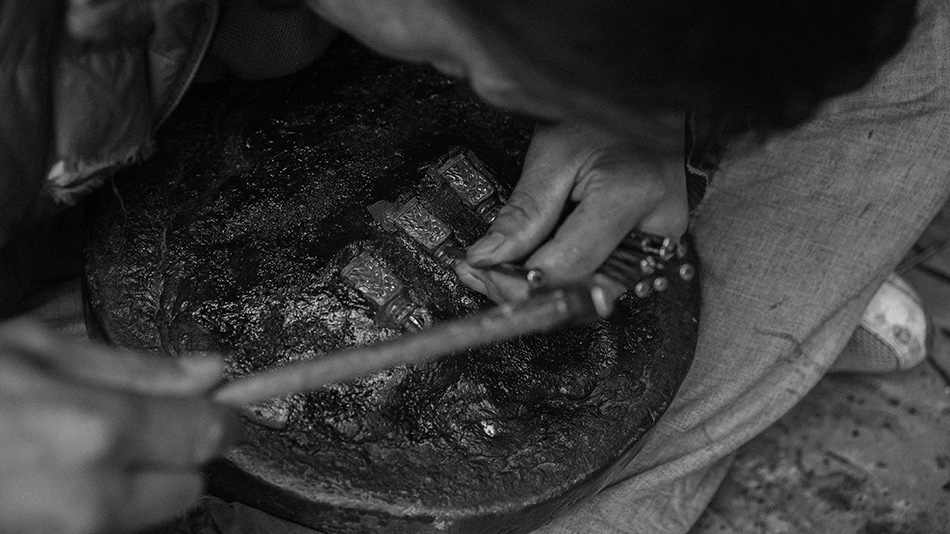
The Maisu poaching situation was once very serious. Tashi Dorje is a very devout Buddhist and in order to protect the wild animals in the primeval forests he vowed that he would only pass on his gold and silver processing handicraft if the poaching stopped. Seven years later the Dzongsar hunting phenomenon has basically disappeared.
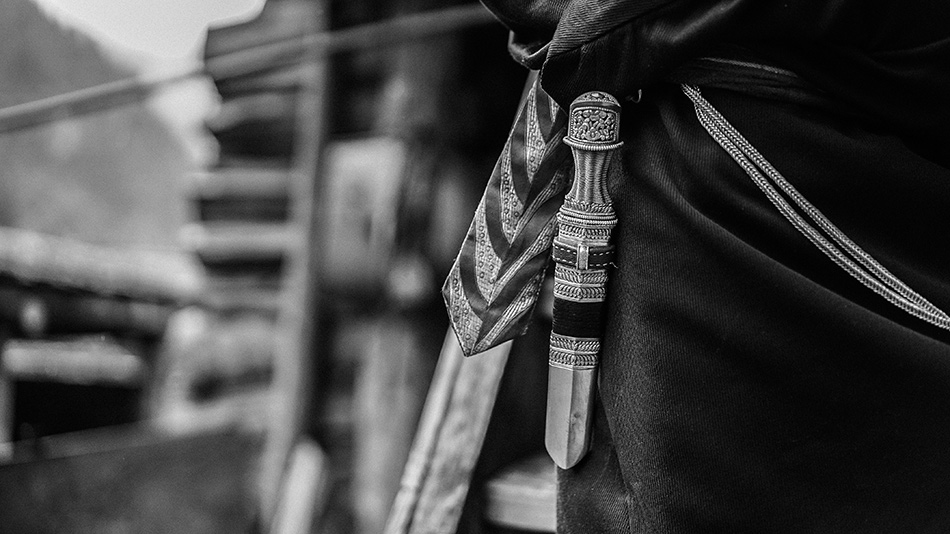
Tashi Dorje passed away in March 2015, but the traditional Dzongsar handicraft heritages of casting, blacksmithing and gold and silver processing still continue to this day due to his willingness to pass them down.
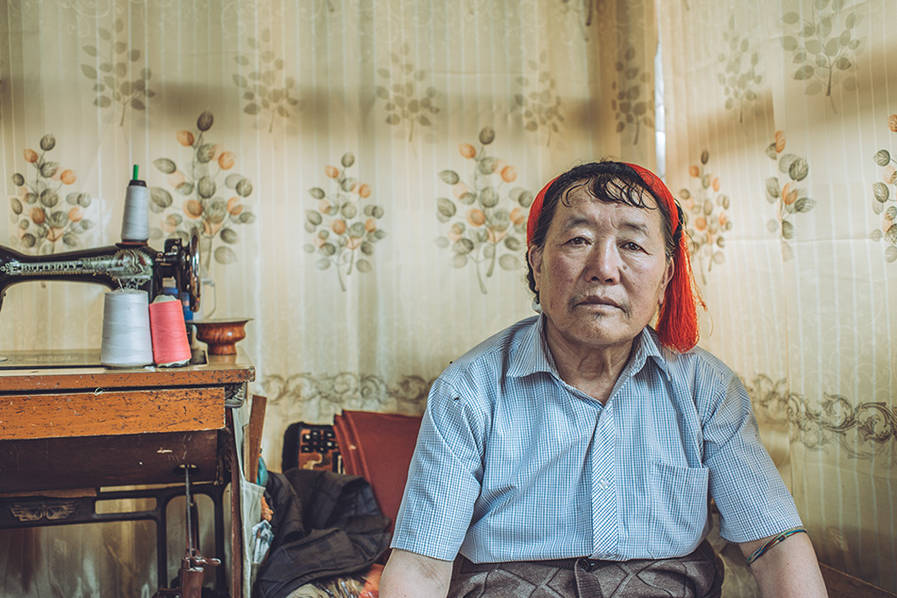
Tsega is a 44-year-old weaving craftsman who comes from Jiagan village, Puma, Dege County, Sichuan.

She learned how to sew from a young age with her mother and while living the herding life learned how to sew traditional shepherd pendants and accessories, such as horse head ornaments, yak wool rope and other shepherd daily supplies.
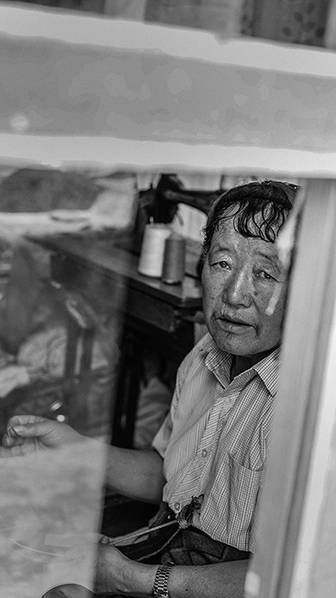
In 2001 Tsega officially joined the Ziwu team and is responsible for making Ziwu handmade accessories. She has already become a senior creator for Ziwu custom accessories and has nine local female apprentices.

Tashi Namgyal is a 82-year-old black pottery teacher. "When I was a child my parents often said that black pottery craftsmanship can not only maintain personal livelihood, but poor and rich people alike can’t live without black pottery products. Like a shepherd eating tsampa, my life has always had black pottery. Living accompanied by black pottery craft is very a gratifying and warm feeling."

Jamyang Geleg is a 40-year-old black pottery teacher.
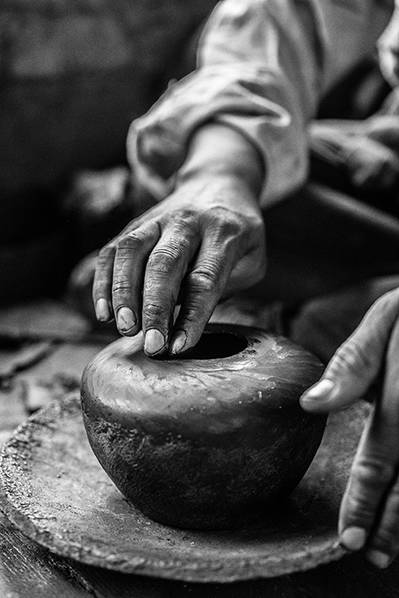
Before the age of 16 Jamyang remained at home herding. His father was a black pottery craftsman, but learning this craft wasn’t down to him or his father. One day teacher Phuntsok told his father: If your son doesn’t inherit the black pottery craft, this valley will no longer have anyone that has mastered the craft of traditional black pottery. It is for this reason that Jamyang Geleg started learning how to make black pottery.
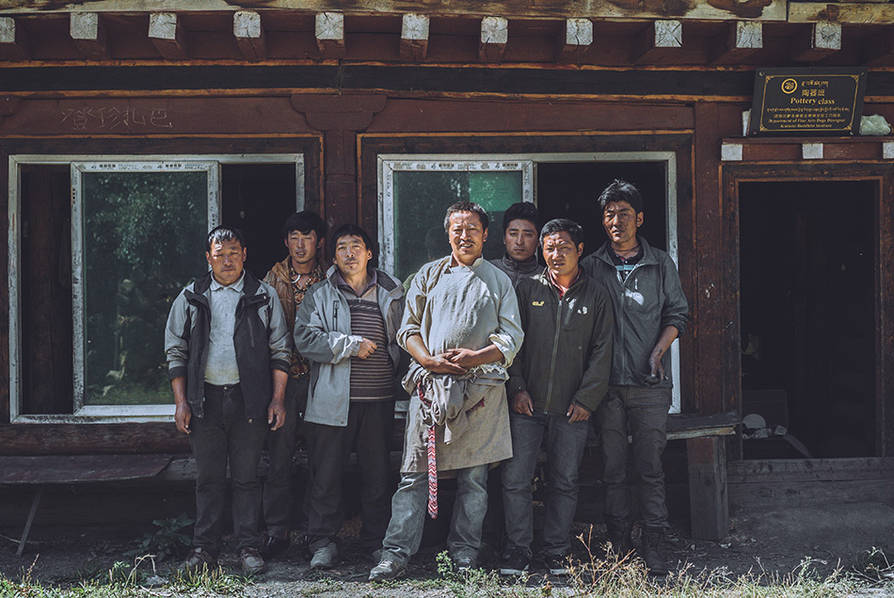
In 2009 he became one of his father’s black pottery teachers and in the years that he’s been teaching he hasn’t deliberately been to recruit students, but still has a steady stream of villagers studying black pottery craft.
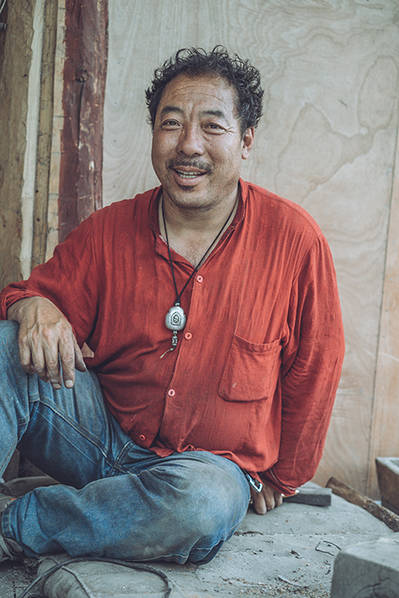
Bolo is a 54-year-old blacksmith teacher. It wasn’t through is parents’ coercion that he first came into contact with this craft; he naturally followed his own interests and learned from his uncle Tashi Dorje.

Before the age of 25, Bolo had made Tibetan traditional jewelry for men and women and was responsible for the forging work on the temple’s golden roof. Nowadays, Bolo’s main source of income comes from working on temples such as Gonchen Monastery, Dzongsar Monastery, and monasteries in Lhasa, Chamdo, Hongyuan, Ngapa and other regions.
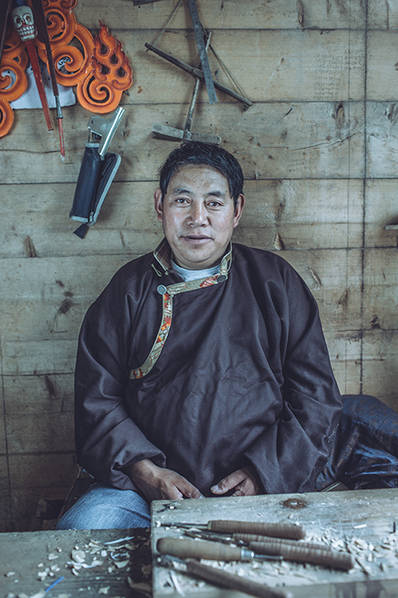
Tsewang Phuntsok is a 51-year-old wood carving teacher.

From the age of 18 he studied painting, architectural painting and other forms for six years.

Maisu wood carving craft is known to be the best, so Tsewang was concerned about its heritage. Many of his students are now living in other places, but when a client makes an order he draws the model on a wooden board and sends it to his students so that they can make customized wood products based on these samples. This not only ensures that the students have a source of income, but also that the long tradition of wood carving is passed down.
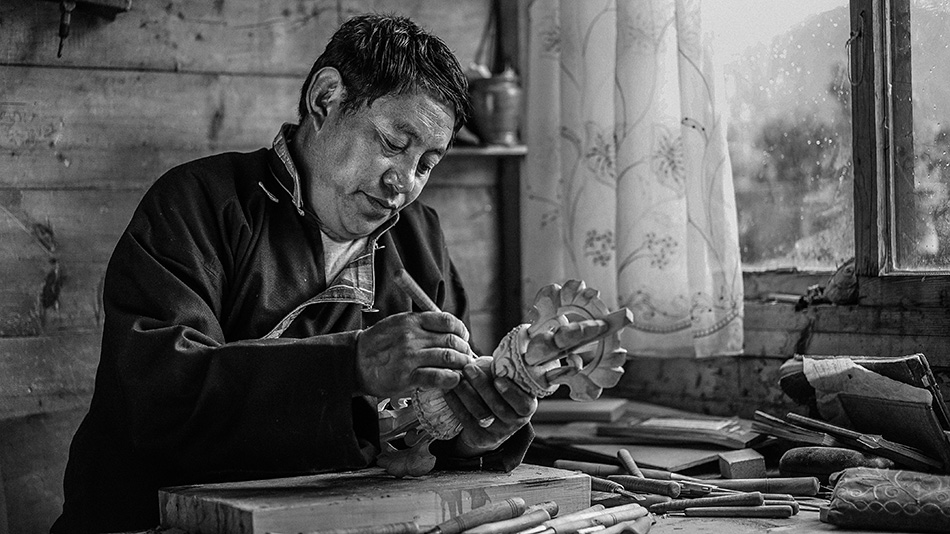
Tsewang Phuntsok has been teaching the craft since 1997 and has taught a total of more than 90 students, most of whom come from Maisu and Baiyu in Sichuan, Regong in Qinghai, and Gannan Tibetan Autonomous Prefecture other places.

Dawa Drakpa is a 25-year-old copper casting teacher. "When I was a child I often picked up white stones called 'Xieduo', then I would lie on the concrete floor at home and doodle on the dark stones. At the time it was hard to buy a pencil and notebook so my trousers were often ruined by the rough stones. My mother would blame me for being a naughty boy who likes to paint."

Maisu copper casting was passed down in the 19th century by Dzongsar Monastery’s first Dzongsar and is also the only Tibetan area to retain and pass on this most complete and exquisite Tibetan craft.
Your Comment
Name E-mailRelated News
-
;
-
-

-
Taiwan companies participate for the 1st time in Tibet Exhibition
Merchants from Taiwan will participate in the 3rd China Tibet Tourism and Culture Expo, China News Agency reported on September 8.
-
-
-
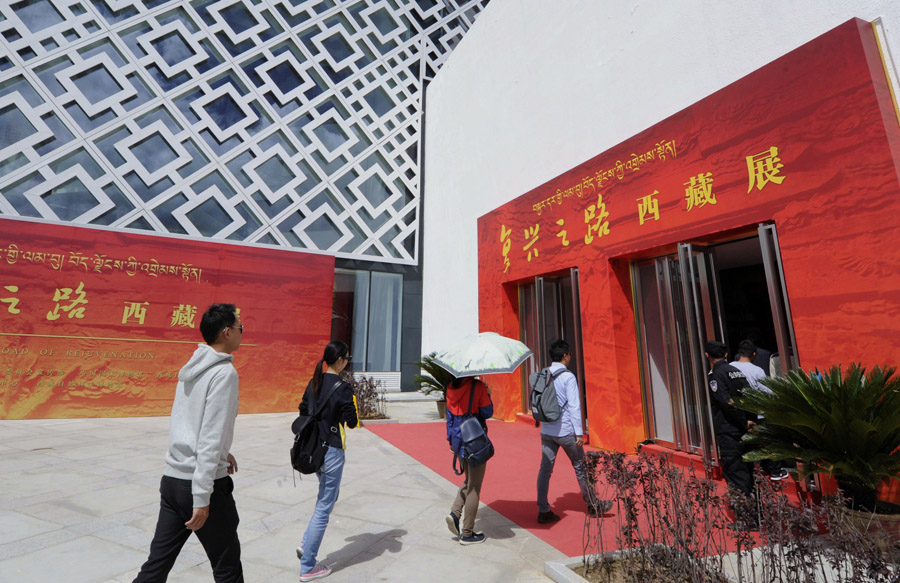
-
"Road of Revival" Exhibition shows in Tibet
The Exhibition of "Road of Revival" is on show in the Tibetan Science Museum.
-
-
-

-
6 state intangible Tibetan cultural assets realized digitalized ex
Is it possible to experience in its entirety the wonders of Tibetan culture without going to Tibet? National intangible cultural asset projects are making it possible.
-
Based in Lhasa, Tibet Vista is a Tibet travel agency that specialized in Tibet permit, and Tibet tours for both private and group travelers at a local price!
•4 Days Lhasa City Group Tour from USD 460 •8 Days Everest Base Camp Group Tour from USD 850 •15 Days Mt.Kailash Group Tour from USD 1780 •2016 Tibet Train Tours from Beijing, Shanghai, Chengdu, Xining,etc










